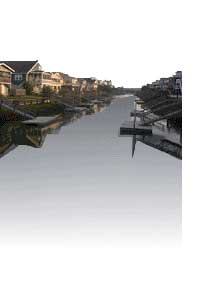Towns of Roman Britain.
The Romans
liked town life. But most Roman towns were small. The poet Virgil wrote that ‘Rome stands out from all other cities
as the cypress (tree) towers above lowly shrubs.’ In Britain, some towns were made for soldiers to retire to. Others
grew through trade or were built on the old tribal strongholds.
Britons built the new towns themselves, but Roman army planners probably laid out the first ones at St
Albans and Canterbury. Towns that were once tribal strongholds often used the local tribal name, such as Cavella Atrebatum
(town in the wood of the Atrebates). Its name today is Silchester.
Roman towns were neat, with straight streets in a criss – cross pattern. At the main cross roads
in the town centre was an open space called the Forum. Shops and workplaces stood on three sides. On the fourth side was the
basilica, or town hall and law courts.
Large towns had piped water, baths, drains and sewers. Some had amphitheatres. By AD 100, Cirencester,
Exeter, Silchester, Winchester ad St Albans all had fine public buildings of stone. Other buildings were wooden - framed.
Big towns were noisy, smelly and crowded, with streets full of people and carts. Large and small
houses, shops, offices and workshops were all side by side, with few poor – or slum areas. Many towns grew outside army
bases and some were set up for workers in pottery or mining industries.
Each town was governed by a council, which raised money from taxes on goods passing through the town, from
rents, fines, and from the sale of water and minerals. London was Britain’s biggest town by far, and by AD100 it was
capital of the province. Many of its people were Merchants who, like businessmen and shopkeepers might be freed slaves.
